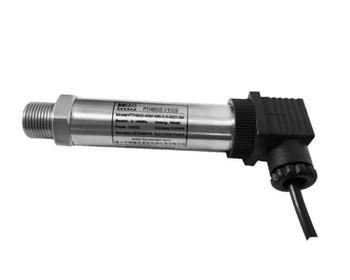Pressure sensor use matters needing attention

The key points in the process of using the pressure sensor and the correct installation position of the transmitter on the process pipeline are related to the measured medium. To obtain the best measurement effect, the following conditions should be considered:
1. Prevent the transmitter from contacting with corrosive or overheated media;
2. Prevent dross deposition in the duct;
3. When measuring the liquid pressure, the pressure tap should be opened on the side of the process piping to avoid sedimentation.
4. When measuring gas pressure, the pressure tap should be at the top of the process pipe, and the transmitter should also be installed at the top of the process pipe so that the accumulated liquid can be easily injected into the process pipe.
5. The pressure guiding pipe should be installed in places where temperature fluctuations are small;
6. When measuring steam or other high-temperature medium, a condenser such as a buffer tube (coil) must be connected, and the operating temperature of the transmitter should not exceed the limit.
7. When freezing occurs in winter, the transmitter installed outdoors must adopt anti-freezing measures to avoid the expansion of the volume of the liquid in the pressure-introducing port due to the ice, leading to the damage of the sensor.
8. When measuring the liquid pressure, the installation position of the transmitter should avoid the impact of liquid (water hammer phenomenon), so as to avoid over-voltage damage of the sensor.
9. When wiring, pass the cable through the waterproof connector (accessory) or the winding tube and tighten the sealing nut to prevent rain, etc., from leaking through the cable into the transmitter housing.
The role of the pressure transmitter is to convert the controlled variable measured by the measuring element into the type of signal required by the controller.
The difference between a pressure transmitter and a differential pressure transmitter: The differential pressure transmitter is a gas or liquid pressure unit is Pascal; pressure transmitter generally refers to the gas liquid pressure, but also for the pressure is also called the load cell, The unit is Newton or kilograms (force), or tons. The differential pressure transmitter measures the pressure difference between two (inside the container) gas or liquid is a relative amount; the pressure transmitter measures the pressure of a single (inside the container) gas or liquid, which is an absolute amount. From the point of view of use, there are two inlets for the differential pressure, which are used to introduce two samples to be tested respectively to obtain their pressure difference; there is only one orifice for the pressure.
Maintenance of the pressure transmitter: The pressure transmitter is required to be tested once a month and once a week, mainly to remove the dust from the instrument, and to check the electrical components carefully. The current value of the output should be checked regularly and the pressure should be changed. The inside of the transmitter is weak, and it must be separated from the outside world.
With regard to the service life of pressure transmitters, suppliers now offer lifetime guarantees for high-end, high-performance transmitters, but in fact these assurances are only a matter of time for the promotion of low-end products. In the near future, today's advanced technologies that only high-performance transmitters will have will generally be applied to low-end transmitters, and a clear life guarantee at that time will be very common.
USB Adapter, USB to Type C Adapter, USB C Female to USB A Male Adapter, USB Connector
USB Adapter, USB to Type C Adapter, USB C Female to USB A Male Adapter, USB Connector
Ningbo HanCheng(HC) Electronic Co.,Ltd , https://www.hcwires.com